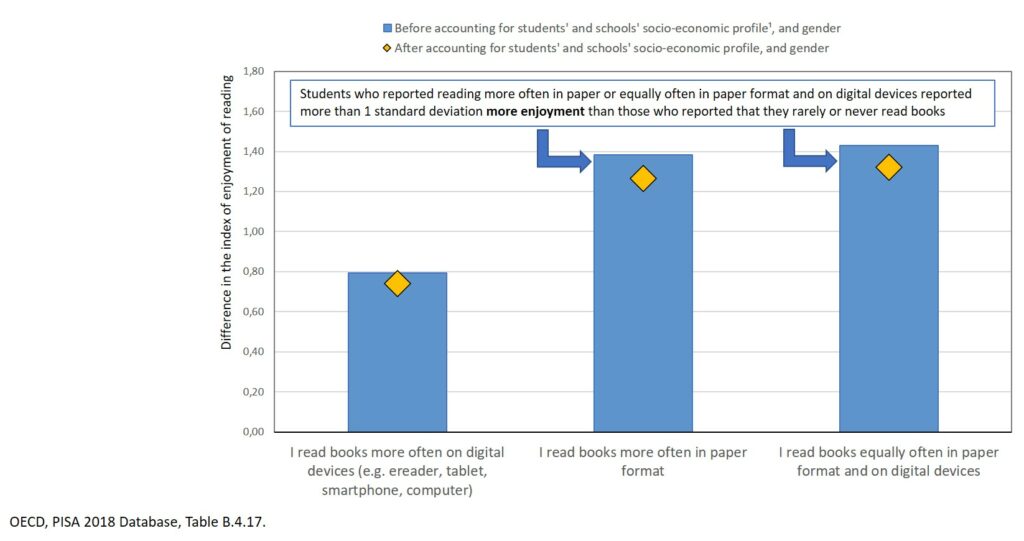Reading printed books is good for you – and your grades – Chart of the week
In the light of distance learning during the pandemic and the move towards digital media in schools there is probably not enough of a discussion on how reading printed books is impacting learning, the joy of reading and consequently the grades. The OECD in sifting through the 2018 PISA study results on school performance published their “21st-Century Readers” report this year, with some interesting findings.
Probably the first two findings are not that surprising after all, although the trends are worrisome.
- In the 2018 Pisa study, approximately half of students (49%) on average across OECD countries agreed or strongly agreed with the statement “I read only if I have to”. This is approximately 13% more than in PISA 2000
- Approx a third of students reported that they rarely or never read books, another third reported reading books more often in paper format than on digital devices, about 15% that they read more often on digital devices and about 13% that they read equally often in paper format and on digital devices
Surely, only reading when having to, results in rarely reading books. But the interesting part is when comparing the book formats.
- Compared to students who rarely or never read books, digital-book readers read for enjoyment about 3 hours more a week, print-book readers about 4, and those who balance both formats about 5 hours or more a week after accounting for socio-economic background
- Students who reported reading more often on paper or equally often in paper and on digital devices reported more than 1 standard deviation more enjoyment than those who reported that they rarely or never read books
If you enjoy reading more, you read longer, which surely feels as this should be linked. However, paper beats the electronic alternative in achieving this goal.
- Compared to students who rarely or never read books, students in OECD countries who reported reading books more often on paper scored 49 points more in reading while students who reported reading books more often on digital devices scored only 15 points more after accounting for socio-economic profile
And here is the real catch. If you enjoy reading, you read more and consequently you have a better understanding of what is being read. This in turn improves your grades and in general being able to extract information and distinguishing between facts and opinions.

One quote in the report sums up the findings quite well:
„Education systems in which a higher percentage of students read books more often on paper perform better in reading than education systems in which students read books more often using digital devices. A similar relationship can be observed within countries and economies. “
Or in other words: reading printed books is good for you – and your grades. And a hint for parents: Kids with parents reading books read significantly more themselves.
PS: Recent neurological research confirms that electronic reading promotes brain overactivity in the prefrontal cortex, and results in reduced comprehension.
Leave a Reply